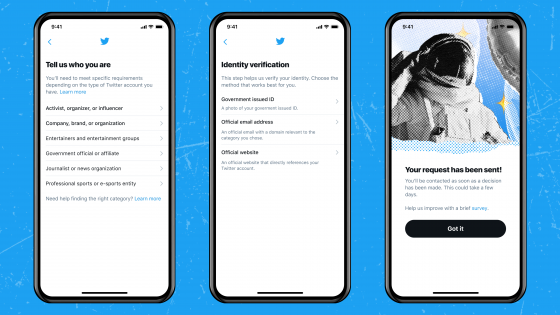If you are a Small and Medium Enterprise (SME) business owner in B2B or B2C considered purchase considering to adopt new marketing technologies to your optimize your current marketing and sales strategy, then you would probably have come across the term MarTech.
The MarTech landscape is vast with various technologies to choose from such as Marketing Automation (MA), Customer Relationship Management (CRM), chatbot, data enrichment, intent data, email AI assistant and Customer Data Platform (CDP), among others.
It can be overwhelming on start not knowing which tool to choose. Your natural inclination might be to google for something along the lines of “best marketing automation tool” or “best MarTech stack” and start building your MarTech stack from there.
The caveat with this approach is that you might end up subscribing for tools you never end up using. According to the “Marketing Technology Utilization Survey” conducted by Ascend2, about 52% of marketers have only been “somewhat successful” with their existing MarTech utilization strategy.

The above flow diagram gives you an idea of the various steps we will be diving into in this article.
Identify Business Requirements
Now that we got that out of the way, let’s talk about a process to help you select a MarTech stack that is most relevant to your business needs. First ask yourself what are the sales and marketing processes in your company? Have you mapped this out? If you have not done so, then you really need to cover this first. Below are some questions that you can use as a guide.
- What does the sales team need to do?
- Is there a process in place to keep track of the different opportunities for sales?
- How do you define a qualified marketing lead?
- What are some of the high intent actions that leads have taken that lead to pipeline creation?
- What is the marketing team’s goals?
- Which parts of the marketing funnel needs improvement?
- Which sources are your leads coming from?
- Are there privacy regulations that you need to adhere to within the region?
To address these questions, it is best to assemble a taskforce consisting of representatives from marketing, sales and technology. Having answers to the above questions will allow you to better select tools that are most useful for the team. Yes, do not leave your technical team out of the discussion, they can help identify potential challenges to consider.
Evaluate Your Current MarTech Stack
In addition to the above questions, go deeper and start looking at your current technology stack. You might find out that you are able to address most of the problems without the need to subscribe to a new tool. Below are some to help with your evaluation.
- Which processes take a lot of work?
- Are these processes worth automating? Can you streamline them instead?
- Which processes are most successful at the moment?
- Which processes have the most potential for a quick win?
Now that you have a better idea of your MarTech needs, start prioritizing the problems you wish to address. The reality is that you are likely to have a budget constraint that you would need to consider. Evaluate this against your high priority problems. Now you are set to start talking to the different MarTech vendors.
As you evaluate the different tools, keep in mind that subscription cost is not the only cost that you need to factor in. You will need to consider implementation and operational costs as well. If you do not have a MarTech specialist within your team, then you will likely need to hire an external consultant to assist you. You would not want to buy an F1 car without a proper F1 driver, this is a recipe for disaster.
What Are Some of the Technologies I Should be Looking At?
The two core technologies you could start with would be CRM and Marketing Automation.
For CRM, Sales Cloud by Salesforce is worth considering. It will help you analyse and manage relationships with your customers, with workflows to help automate some of your sales processes.
For Marketing Automation, Marketo and HubSpot are two platforms that I have had experience with and would recommend considering them. They will fulfil most of your needs such as lead management, segmentation and analytics.
If you are only thinking of email drip campaigns at the moment, then something simpler such as MailChimp will do the job.
The other peripheral technologies that I have mentioned at the start of this article will require you to first analyse your business needs.
Above all, have a concrete branding and marketing strategy in place before you embark on implementing the various MarTech tools out there. Ask yourself simple questions such as is my messaging resonating with my target segment? If they are not, then no amount of MarTech wizardry will save you.
Adoption and Change Management
This is an area that I have seen several clients fail in. When implementing the tool that you have bought, keep in mind that a successful setup alone will not ensure success. You need to have an adoption strategy in place to ensure that the new processes and technologies you have put in place are used properly.
People are not going to automatically know how to use the tools you have bought; you will need to appoint a MarTech champion within the team to drive adoption through training and consistent audits in the initial phase.
Ideally this person should be well versed in the psychology of marketing and technology. If that unicorn does not exist within your team, then consider getting an external consultant onboard to train one of your marketers for a few months. The end goal here is to develop this capability internally.
The lack of proper adoption by the team will lead to problems such as systems breaking down and data getting contaminated over time, rendering your MarTech stack useless.
Summary
Now that you have reached the end of the article, it might be helpful to recap some of the steps we have went through earlier.
- Identify business requirements
- Evaluate current MarTech stack
- Form a taskforce consisting of representatives from marketing, sales and technology to help with points (1) and (2)
- Prioritize the key problems you wish to address
- Factor in implementation cost in your budgeting
- Appoint a MarTech champion within your team to drive adoption
Following these key six steps will help increase your chances for a successful MarTech implementation for your company. If you require further help, feel free to hit me up on LinkedIn!
Marketing Mindset 101
Hafiz is the Lead Marketing Technologist at Design Prodigy, a boutique award winning agency that prides itself in solving tough marketing problems. Follow him on LinkedIn.



















